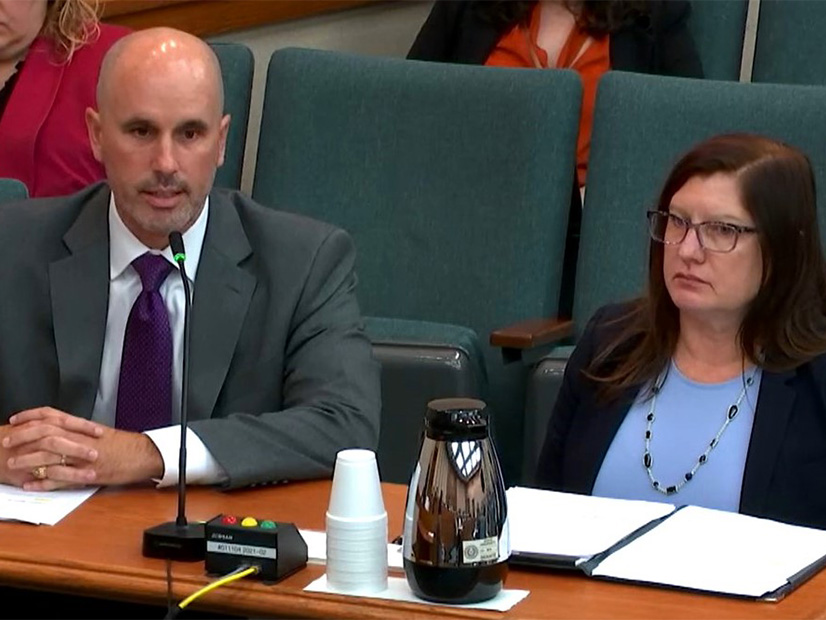The NEPOOL Participants Committee voted Sept. 5 to update the Generation Information System (GIS) to enable the transfer of hourly certificates, opening the door for the sale of hourly renewable energy credits.
Constellation Energy, which developed the proposal, had argued that hourly tracking is the logical next step in the evolution of RECs and would help incentivize carbon-free resources.
“Customers are looking beyond annual procurement of clean energy and unbundled clean energy attributes [toward] supply options that match generation with hourly consumption,” Constellation’s Gretchen Fuhr told the Markets Committee this year. “ISO-NE is already a leader in tracking all generation sources. Tracking hourly attributes is the next step.”
The proposal failed to gain the approval of the MC in July but received 69.6% support from the PC. (See NEPOOL Markets Committee Restarts Work on Capacity Market Changes.) PJM rolled out support for hourly RECs in 2023. (See PJM EIS Announces New Hourly Clean Energy Certificates.)
The GIS system is administered by APX, which will develop the changes needed through 2025. The update is expected to cost an additional $75,000.
Financial Assurance Policy Changes
The PC did not reach a consensus to support proposed changes to the Pay-for-Performance (PFP) financial assurance policy, which ISO-NE has said are important to reduce the risks of generators defaulting on their payments.
In a memo prior to the meeting, ISO-NE wrote that it “has identified a fundamental gap in its credit risk management approach regarding the mitigation of PFP penalty payment defaults. The ISO’s proposal to assess capacity sellers’ liquidity and require more collateral from higher-risk entities on an ongoing basis addresses this risk.”
The PFP rate is set to increase from $5,455/kWh in the current capacity commitment period to $9,377/kWh in 2025/2026.
The RTO has proposed to introduce “a corporate liquidity assessment to evaluate PFP penalty default risk that could result in additional financial assurance requirements for higher-risk market participants.”
Following the liquidity assessment, ISO-NE would assign market participants a risk category, which would determine its financial assurance requirement. Some generators have expressed concerns about added costs associated with the additional financial assurance requirements.
To help limit overall risks, the New England Power Generators Association proposed a pair of revisions to the proposal: delay the implementation date of the revisions and add flexibility to the ability of generators to trade out capacity supply obligations. (See ISO-NE Outlines ‘Straw Scope’ of Capacity Market Reforms and NE Generators Propose Financial Assurance Changes.)
ISO-NE’s proposal failed to pass the two-thirds approval threshold with 62.5% in favor, while NEPGA’s revisions also failed with 47% and 53% in favor, respectively.
Despite that, a spokesperson for ISO-NE said the RTO plans to file its proposed changes with FERC.
COO Report and Aug. 1 Scarcity Event
About 1,150 MW of generator outages and reductions, higher-than-expected temperatures, a pair of constrained interfaces and about 350 MW of out-of-service fast-start resources combined to cause ISO-NE’s capacity scarcity condition on Aug. 1, COO Vamsi Chadalavada told the committee.
Chadalavada noted that the RTO entered the day with a limited capacity surplus and experienced about 750 MW in outages prior to the scarcity event. An additional 400 MW in outages occurred as the grid approached peak load, he added.
The Aug. 1 peak load was the highest of the month, at 23,758 MW. Oil generation on the system increased drastically for the peak, while hydro resources also ramped up significantly.
PFP charges for underperforming resources totaled about $50 million during the event. The average systemwide LMP reached $2,113/MWh during the peak hour.
For the month, the real-time hub LMP averaged about $39/MWh, Chadalavada said. The overall monthly energy market value was $403 million through Aug. 27, compared to $674 million in July and $310 million in August 2023. The Forward Capacity Market value was $120 million.
Chadalavada’s monthly report indicated the New England grid’s carbon emissions for the year continue to outpace those of 2023, largely because of increased natural gas emissions.
Order 2222
Also on Sept. 5, FERC accepted by delegated order a compliance filing by ISO-NE for Order 2222 that specifies the deadline for meter data submission (ER22-983-008). The proposal was not protested by any parties.
Order 2222 directs grid operators to allow aggregations of distributed energy resources to participate in wholesale markets and has spurred a series of compliance filings from ISO-NE. (See Still More Work for ISO-NE on Order 2222 Compliance and FERC Directs ISO-NE to Submit Another Order 2222 Compliance Filing.)
